- Joined
- Oct 13, 2014
- Messages
- 9,459
HI All,
I am in the midst of refurbishing a 50's era Wilton C1 bullet vise, I picked up for cheap. Several years ago when I started the project, I striped the whole thing down and did an initial cleaning. I found the nut was very worn out so I ordered another. At the time, I thought the screw was still serviceable. Then I got sidetracked and the parts sat in a box on the basement floor for a couple of years...
Naturally, it all rusted up a bit so upon restarting the project, it all went into the Evapo-Rust and a got a thorough wire brushing. That 's when I discovered the screw had some serious pitting on the threads. The replacement is $400 bucks so I'm not going that route. I could make a new one but the acme insert, tool holder and a decent steel bar aren't cheap either. So I figure I could just buy a piece of acme threaded rod for $30 bucks and attach it to the existing handle. But how?
I figure it could be friction welded, in fact I think that's how it was made in the first place. I have screwed around with this technique in the past. However, I have never attempted it on steel of this diameter or for a part that really mattered.
Does anyone have any real world experience with friction welding, or a better Idea for attaching the screw to the handle?
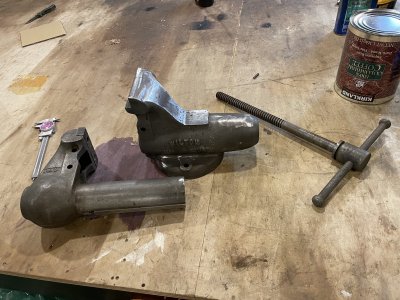
Overall its in pretty god shape for being about 70 years old.
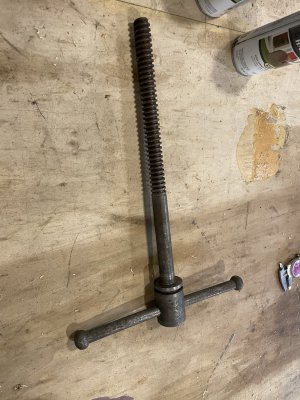
I doubt the damage was due to the rusting, the screw was caked with hardened grease and dirt that I miss in the first cleaning.
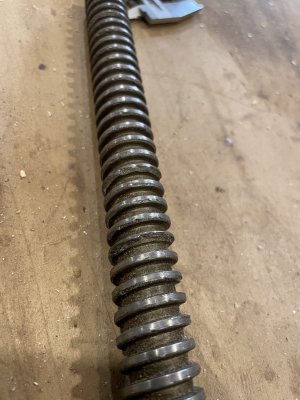
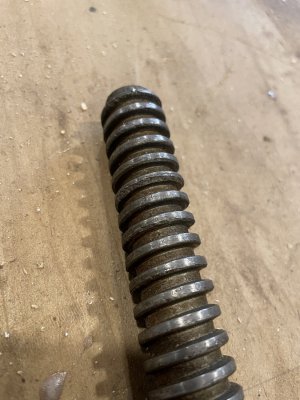
Though the screw is still serviceable, I fear the pitting will grind away at new nut.
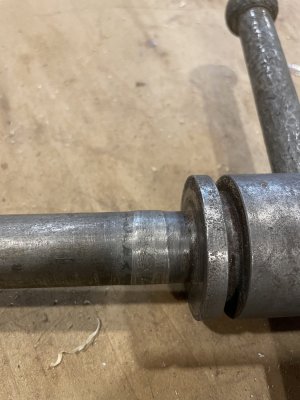
This is where I think they friction welded the screw section to the handle, when it was made.
Any advice will be greatly appreciated.
Thanks for looking.
Eddy
I am in the midst of refurbishing a 50's era Wilton C1 bullet vise, I picked up for cheap. Several years ago when I started the project, I striped the whole thing down and did an initial cleaning. I found the nut was very worn out so I ordered another. At the time, I thought the screw was still serviceable. Then I got sidetracked and the parts sat in a box on the basement floor for a couple of years...
Naturally, it all rusted up a bit so upon restarting the project, it all went into the Evapo-Rust and a got a thorough wire brushing. That 's when I discovered the screw had some serious pitting on the threads. The replacement is $400 bucks so I'm not going that route. I could make a new one but the acme insert, tool holder and a decent steel bar aren't cheap either. So I figure I could just buy a piece of acme threaded rod for $30 bucks and attach it to the existing handle. But how?
I figure it could be friction welded, in fact I think that's how it was made in the first place. I have screwed around with this technique in the past. However, I have never attempted it on steel of this diameter or for a part that really mattered.
Does anyone have any real world experience with friction welding, or a better Idea for attaching the screw to the handle?

Overall its in pretty god shape for being about 70 years old.

I doubt the damage was due to the rusting, the screw was caked with hardened grease and dirt that I miss in the first cleaning.


Though the screw is still serviceable, I fear the pitting will grind away at new nut.

This is where I think they friction welded the screw section to the handle, when it was made.
Any advice will be greatly appreciated.
Thanks for looking.
Eddy
Last edited:

 Our plastic takes only 2.8 seconds .
Our plastic takes only 2.8 seconds .